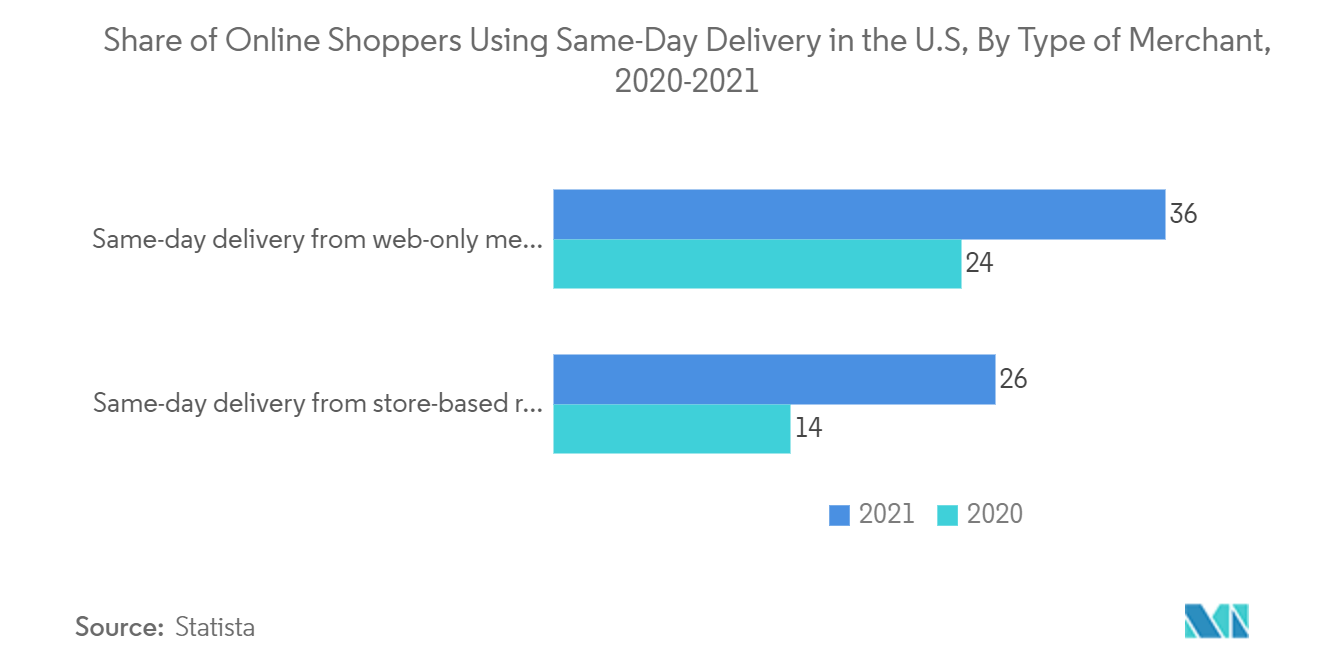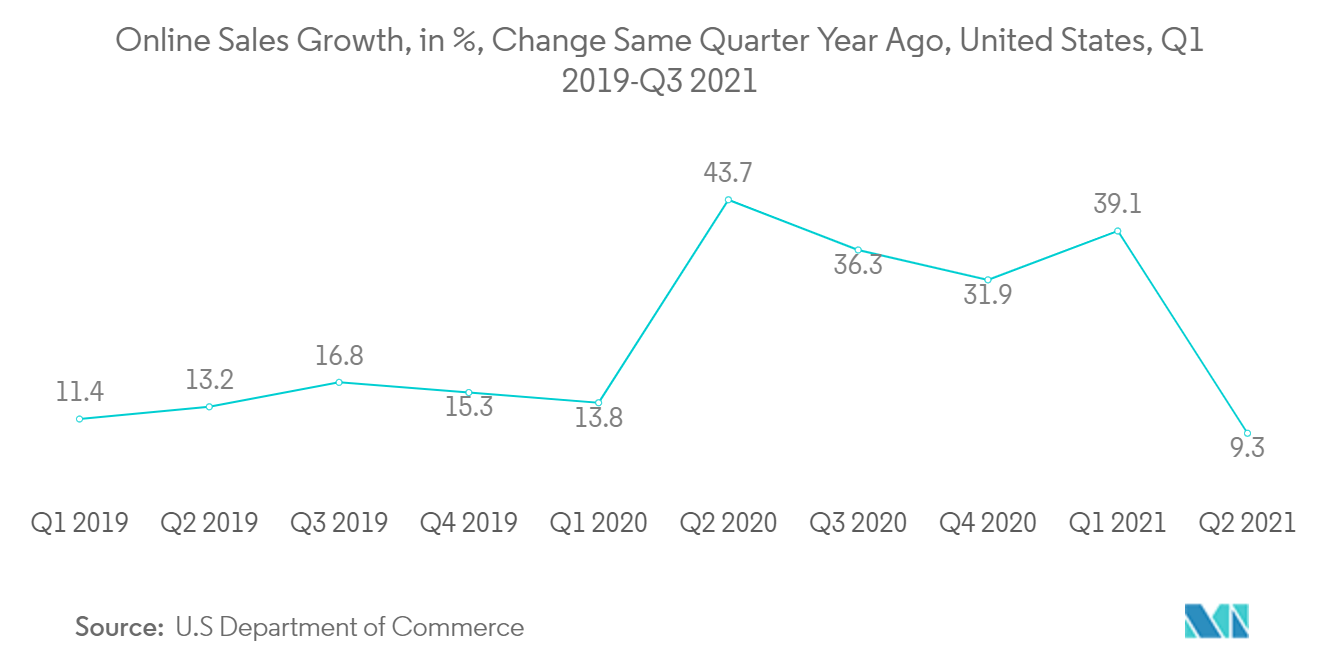Market Trends of United States E-commerce Logistics Industry
This section covers the major market trends shaping the US E-Commerce Logistics Market according to our research experts:
Same Day Delivery Driving the Market
Same-day delivery has the potential to alter consumer purchasing habits. It combines the ease of online shopping with the immediate gratification of physical stores. In recent years, some of the world's leading logistics companies, including DHL, FedEx, and UPS, have begun testing and operating new same-day delivery models.
The same-day delivery market in the United States has grown over the years, owing to the fact that major players serve the majority of the area. same-day delivery in e-commerce is quickly becoming one of the most popular services in the United States, particularly in grocery and pharmacies.
The growing B2C e-commerce market in the US is driving the same-day delivery market growth. This industry accounted for a major share of overall retail sales. The B2C e-commerce segment is gaining prominence in the US because of the increasing Internet penetration and online shopping.
Between 2020 and 2021, the use of same-day delivery increased in the United States. This was more often the case for orders shipped by web-only merchants, and less frequent for store-based retailers. According to a survey, 24 percent of U.S. online shoppers opted for same-day delivery for purchases from pure online merchants in 2020. As of February 2021, the percentage increased to 36 percent.
Amazon and other e- commerce giants are expanding their same-day delivery services. Amazon recently announced a same-day delivery service to a half-dozen additional US cities in August 2021. The service, which the retailer has been working on for the past year to make same-day delivery even faster, now allows consumers in a number of markets to shop up to 3 million items on Amazon.com and receive their orders in just a few hours. Amazon invested in what it called "mini-fulfillment centers" closer to where customers lived in selected US markets, initially in Philadelphia, Phoenix, Orlando, and Dallas, to reach customers faster.
Faster same-day delivery has been one of the most significant services Amazon has used to compete with rivals such as Walmart and Target, both of which benefit from having a large brick-and-mortar footprint that allows them to serve their customers more quickly through same-day order pickup, curbside pickup, and same-day delivery services.

Growing Preference for offline Shopping Post Pandemic May Impede Market Growth
According to US Department of Commerce estimates, e-commerce growth slowed dramatically year over year in the second quarter of 2021 after a year of large online shopping spikes as COVID-19 took hold in the US.
The deceleration in consumer spending was expected because Q2 2021 benchmarks against the peak of online pandemic shopping in the same period in 2020. In addition, as more Americans received the vaccine in Q2 and coronavirus infections decreased, buyers returned to physical stores and moved some of their spending from ecommerce sites to the brick-and-mortar channel. Since the Great Recession in 2008, the 9.3% increase was the weakest year-over-year growth rate of any quarter or year.
As more shoppers flocked to the stores in 2021, offline sales surged 22.2% for the quarter, the highest-ever recorded gain for the channel. In Q2 2021, offline retail grew at a rate more than double that of e-commerce, resulting in a dip in penetration.
Because many physical businesses were shuttered, offline retail decreased by 4.4% in Q2 2020. The record increase in retail expenditure in 2021 signaled a significant comeback in overall spending, which had only climbed by 2.6% in Q2 2020 as online gains completely offset declining store sales. Digital sales, on the other hand, accounted for only 9.3% of total retail gains in the second quarter of 2021.

